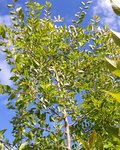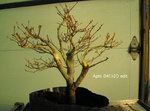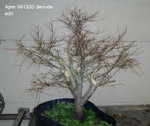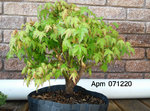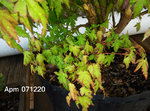Jhervi
Seedling
Hi yall,
I have a trident maple(1-2 years old), living in zone 9b
I noticed my trident maple, that I've had for three weeks now, has a few leaves that are much larger than the rest. These leaves actually came like this from the nursery I bought it from. Is it okay to snip them or will this affect the growth/ overall health of the tree? Or should I just leave them and let them fall off during the next season? I know that defoliating takes energy from the tree so I wanted to ask the experts what they think before attempting anything.
Side note, how do you keep the leaves small?
I have a trident maple(1-2 years old), living in zone 9b
I noticed my trident maple, that I've had for three weeks now, has a few leaves that are much larger than the rest. These leaves actually came like this from the nursery I bought it from. Is it okay to snip them or will this affect the growth/ overall health of the tree? Or should I just leave them and let them fall off during the next season? I know that defoliating takes energy from the tree so I wanted to ask the experts what they think before attempting anything.
Side note, how do you keep the leaves small?




